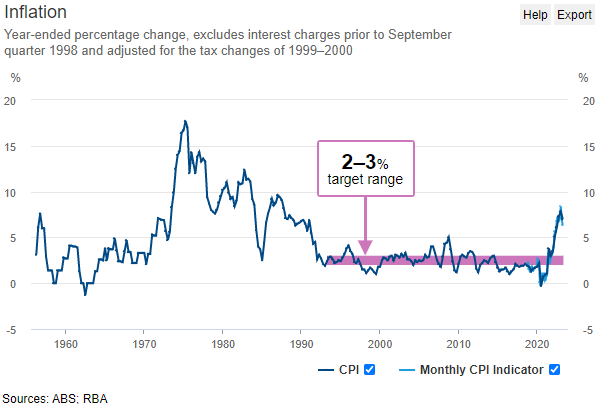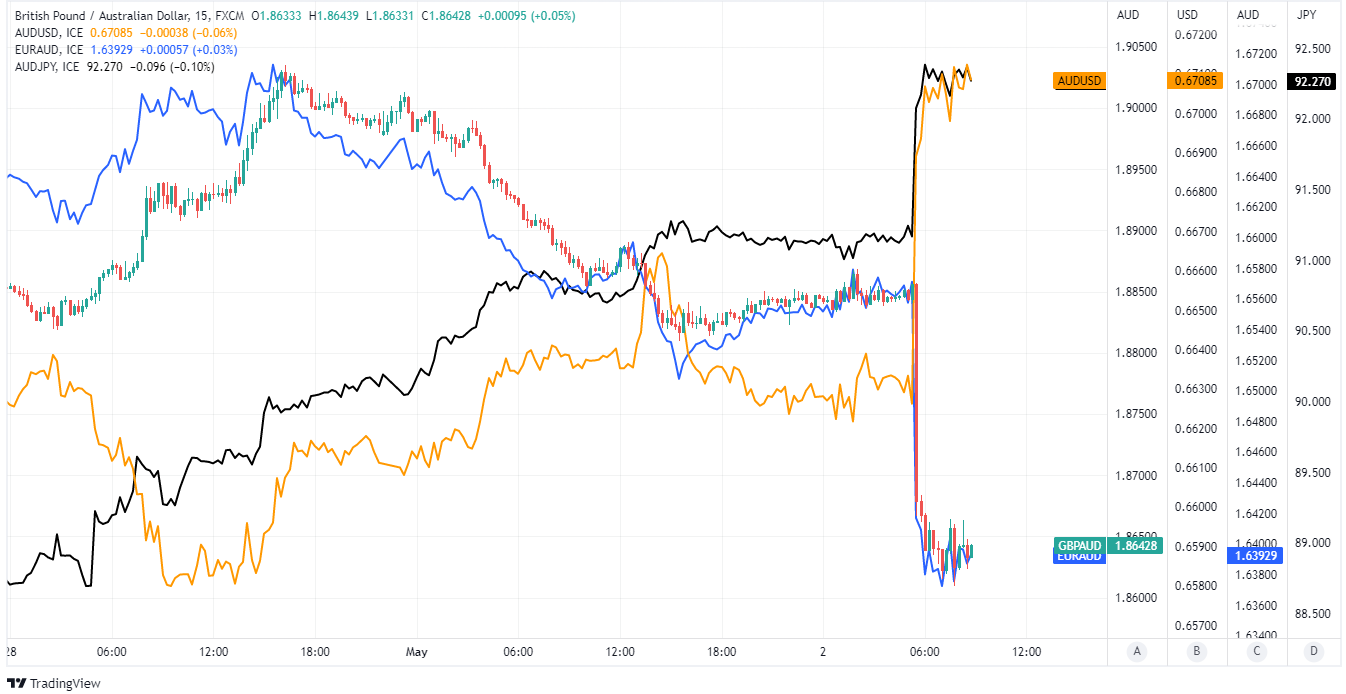Australian Dollar Rallies as RBA Cites Inflation Risk for Raising Again
"Goods price inflation is clearly slowing due to a better balance of supply and demand following the resolution of the pandemic disruptions. But services price inflation is still very high and broadly based and the experience overseas points to upside risks" - Reserve Bank of Australia Governor Philip Lowe.

Image © ArchivesACT, Reproduced under CC Licensing, Editorial, Non-Commercial
The Australian Dollar topped the board among major currencies early in the new week after the Reserve Bank of Australia (RBA) cited the risk of imported inflation becoming embedded in domestic services prices for surprising markets with an eleventh increase in the cash rate.
Australian Dollars were bought widely with the largest gains coming in relation to the Japanese Yen, Swiss Franc and U.S. Dollar after the Reserve Bank of Australia raised its cash rate from 3.6% to 3.85% in a May monetary policy decision that took economists and markets by surprise.
"While the recent data showed a welcome decline in inflation, the central forecast remains that it takes a couple of years before inflation returns to the top of the target range; inflation is expected to be 4½ per cent in 2023 and 3 per cent in mid-2025," Governor Philip Lowe said in a statement.
"Goods price inflation is clearly slowing due to a better balance of supply and demand following the resolution of the pandemic disruptions. But services price inflation is still very high and broadly based and the experience overseas points to upside risks," he added.
Economists had broadly expected the cash rate to be left unchanged at 3.6% for a second time running on Tuesday after the RBA said in March that it intended to pause a year-long interest rate cycle to observe the economic effect of had been 10 increases in the benchmark for borrowing costs.
 Source: Reserve Bank of Australia.
Source: Reserve Bank of Australia.
But Australian Bureau of Statistics figures out last week showed inflation falling by slightly less than was expected by economists with declines owing mainly to lower prices of internationally traded goods, which can be volatile and are known to impact prices in other areas including services sectors.
"Given only 3bp priced in for today’s cash rate decision, the 25bp hike to 3.85% sparked an immediate jump in the Aussie on all cross rates. AUD/USD headed into the decision at 0.6630, surging to 0.6690 within 10 minutes," says Sean Callow, a senior FX strategist at Westpac in Sydney.
"The scale of the surprise could see gains extend multi-day to the 200dma at 0.6734 and even the 200dma at 0.6790, though only if global conditions are favourable (‘dovish hike’ from the Fed?)," Callow adds.
Australia's quarterly inflation rate fell from 7.8% to 7% last quarter but stopped short of the 6.9% that many economists were looking for due to price pressures in non-traded goods and services remaining at elevated levels.
 Above: Pound to Australian Dollar rate shown at 15 minute intervals alongside AUD/USD, EUR/AUD and AUD/JPY. To optimise the timing of international payments you could consider setting a free FX rate alert here.
Above: Pound to Australian Dollar rate shown at 15 minute intervals alongside AUD/USD, EUR/AUD and AUD/JPY. To optimise the timing of international payments you could consider setting a free FX rate alert here.
Stubborn domestic price pressures would, if sustained, mean there is a risk of inflation taking longer to return to the RBA's2% to 3% target band when it was already seen as likely to remain above there until 2025; potentially necessitating an even more aggressive interest rate policy further down the line.
The UK economy might be a good example of this, given that it is now the only advanced economy with a double-digit inflation rate this year, which has led financial markets to anticipate a significant further increase in the Bank of England (BoE) Bank Rate over the coming months.
"Ultimately, discomfort about the rate of decline in inflation and the Bank’s June 2025 inflation forecast remaining at 3% (to be published ‘formally’ in the Statement on Monetary Policy on Friday) appears to have pushed the Board into a hike today," says Adam Boyton, head of Australian economics at ANZ.
"The stickiness in services price inflation had also worried us, although we thought that concern would be reflected in a hike in August and not today," Boyton writes in a Tuesday research briefing.
Boyton and colleagues raised their forecast for the peak in the RBA's cash rate to 4.1% on Tuesday and are tipping August as the bank's last increase.